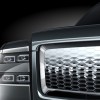
The Mazda CX-5 Diesel Appears To Be a 1 Hit Wonder
After years of waiting for a diesel motor to appear for the Mazda6, the Mazda CX-5 made its debut with it instead in 2019. Many reviewers loved it, and many wanted to see more.
However, the 2020 CX-5 model rolled off the production line mysteriously without the diesel motor. What happened to it? Did Mazda brush it under the rug quietly and eliminate it from the automaker’s lineup? The Road Show explores those very questions.
What was so good about the diesel version?
Road Show reviewers felt that the CX-5 was pleasant to ride in and fun to drive. The low-end torque coming from the Skyactiv-D engine provided a nice smooth steering experience, which made you look forward to taking it for a spin.
Towing capacity improved with the 2019 diesel version of the Mazda CX-5. With the Skyactiv-D motor, you can tow up to 3,500 lbs, which is 1,500 lbs more than the models with regular gas-powered engines.
Fuel economy is a little better than what you get with the 2.5-liter turbo motor. For city driving, the Mazda CX-5 diesel gets you 28 mpg where the 2.5-liter gas motor pulls in only 22 mpg. Highway mileage improves with the Skyactiv-D as well. The diesel brings 31 mpg while the gas-powered counterpart only gets 27 mpg.
What could’ve prevented it from being a part of Mazda’s 2020 lineup?
While the Mazda CX-5 diesel model received great reviews, there were a few drawbacks that could have contributed to it disappearing from the 2020 lineup.
One of the biggest drawbacks is the price. The diesel motor only came with the top-end Signature trim, which is the most expensive one available. The gas-powered versions were much less expensive than the $42,045 MSRP the diesel model commanded.
The engine itself just isn’t as powerful as the 2.5-liter turbo on the gas-powered models. The diesel only produces about 168 hp while the turbo motor generates 250 hp. When you factor in the torque numbers, it doesn’t look any better. The gas engine produces 310 lb-ft of torque, which outperforms the 290 that the diesel is capable of.
Fuel economy ratings are a plus for the SUV, but it’s also a drawback as well. The numbers are better than the gas-powered versions, but not by much. Other rivals still perform better, so the increased ratings hardly mean much.
The last major drawback that could’ve contributed to its seeming demise is the price of diesel fuel in the last year. Energy Information Administrations show that the prices weren’t exactly at their highest, but they stayed over $3 a gallon in the last quarter of 2019 and the first month of 2020. Of course, we saw a decrease in fuel costs because of the Pandemic, but prices may go back up when the economy evens out again.
Will it come back in the future?
Since we’re not likely to see the diesel model in 2020, will it make an appearance later on? While we don’t have any concrete answers to that, Mazda has teased a little bit of info that gives us a tiny bit of hope for 2021 or possibly beyond.
According to The Fast Lane Car, Mazda shared that they finally received certification for 2020, but they’re not planning on releasing any official information until the “time is appropriate.”
Since the 2021 model began production in August, we can pretty much say that 2020 is out for the diesel. But we might get to see it in for next year’s CX-5 version, or possibly the Mazda6 model as well. Only time will tell, however.


